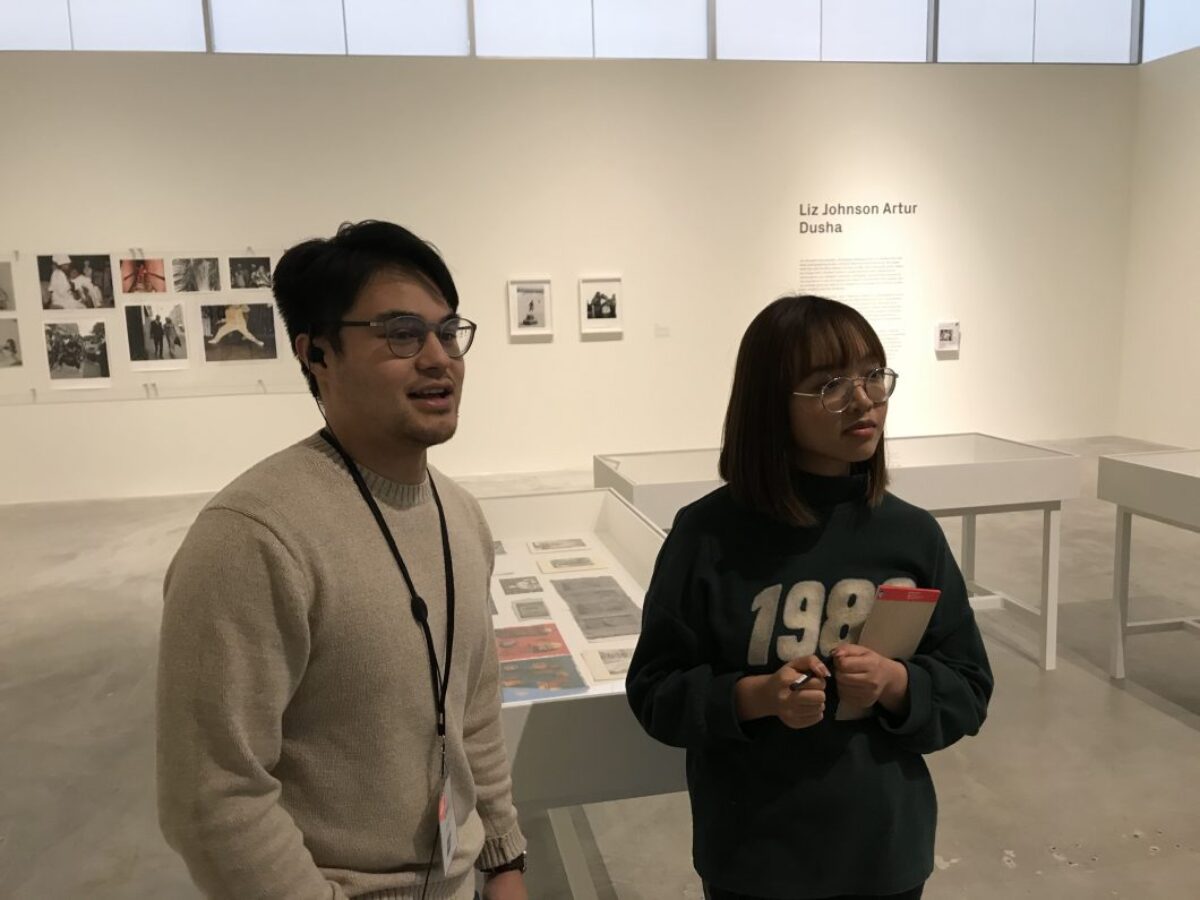When you step into CAM, you often find yourself in the presence of the unfamiliar. This may induce wonder, mystification, a sense of the sublime, confusion, or all of the above. Even for the most sophisticated museumgoer, an encounter with contemporary art can be a disorienting experience. Sometimes it’s intended to be.
Fortunately, Visitor Service Associates (VSAs) are always available to help. Because of Gian Garma, a CAM VSA, I can better appreciate the works of Liz Johnson Artur and Derek Fordjour. Gian, along with all the members of the VSA staff, is happy to inform you about the context of an artwork, highlights about the artistic process, materials used, the themes and issues the work addresses, and more. “The best part is that everything is unscripted,” says Gian, “It’s a conversation, not a lecture.” Spotlight Tours create an interactive environment for visitors to react and respond to the art in their own way. “I get excited when the information I provide changes the way a visitor sees the art,” Gian says brightly, “but it’s even better when what they have to say changes the way I see the art as well.”
Our first stop is Johnson Artur’s video installation AfroRussia, which documents the stories of Russians of African and Caribbean descent. The video opens with the sounds of guitar strumming, followed by a simple text: “LONDON 2019.” Throughout the video, viewers journey through the streets of Russia while wistful, haunting music plays in the background. Sometimes, out of the misty air of Moscow mornings, the figure of a musician emerges. Other times, it is a father and daughter who appear, or a couple hand-in-hand, or a dancer mid-performance.
“Why these people?” I ask, “and what brings them together?”
“Their peoplehood,” Gian says with a smile, “and the fact that they all have stories to tell.”
We move on to Derek Fordjour’s Player Portraits, a series of vivid paintings that line the Project Wall. At first sight, I was unsure where to rest my eyes amidst such vibrant displays of neon-colored shapes and patterns. As if able to read my thoughts, Gian helpfully directs my attention to the material of the paintings, which is comprised of complexly layered cardboard and newspaper pieces. These recyclable materials communicate a notion central to the work: the beauty and dignity in the process of making and remaking.
Our final stop is Derek Fordjour’s site-specific installation SHELTER, a ramshackle structure that comes to life with the sound effect of rain striking a tin roof. Upon entering the site, Gian beams with a renewed excitement despite his obvious familiarity with the work. “It’s the idea of a safe space,” Gian explains, “an inclusive environment for self-expressions, where people can be their authentic, unabashed selves. It’s beautiful.”
I ask Gian if he thinks that SHELTER, in promoting an inclusive space for artistic expressions, functions as a miniature model of CAM. He takes a moment to consider my statement, then turns and asks, “How so?” We carry on our conversation until another member of CAM’s staff comes and takes Gian away.
CAM VSAs are prepared to give anyone a Spotlight Tour, usually offering information about a single artwork for approximately ten minutes. Just ask them!
—Alice Nguyen
